"The gang operated on the left bank of the Don ..."
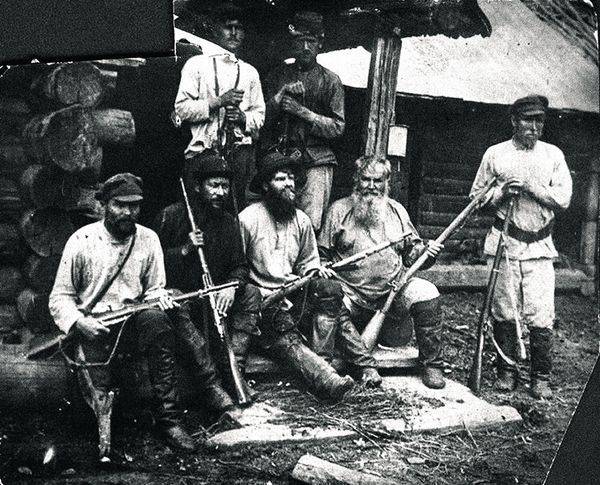
The civil war has left a long train of mutual accounts and local opposition, including armed. Personal and political motives are closely intertwined. From the beginning of the 1920-ies in the records of the Cheka, the OGPU and the Red Army meets the wording: the name-gang gang - 1 bayonet. This is when an uncorrupted leader was perceived as a whole potential gang that would easily unfold using old connections. So it happened repeatedly. On the line of the VChK and then the OGPU, a division was formed into “leaders” and “ordinary thugs,” typologically close to the division of deserters into “malicious” and “according to weakness of will.”
Legacy of the Civil War
In many places during the years of the Civil War, popular leaders emerged, centers of organized resistance to Soviet power were formed. In Ryazan region, in Ryazhsk district, head of the greens in 1919-1920. there was a certain Ogoltsov, who enjoyed the broad support of the peasants. The development of his detachment is similar to the development of the troops of the leader of the Tambov uprising peasants A.S. Antonov. Under a more favorable set of circumstances, “Ogoltsovschina” could give the core to a strong rebel movement 1. The same local legend was in Yaroslavl (Danilovsky district) the leader of the green Konstantin Ozerov2.
Insurgency in the western regions, in the North Caucasus, in Siberia and the Far East over the course of the 1920s. It was an everyday fact. A small rebel detachment of Colonel V. Duganov fought in the vast territory of the Irkutsk province from March 1921 to September 1924. A similar Cossack detachment fought for several years in the Pyatigorsk area3. Order I.N. Solovyov fought in the area of Minusinsk to 1924 g. 4 Armed struggle in Yakutia was conducted in several rounds throughout all 20, in the western regions active "political banditry" was fixed even in the most prosperous years of the NEP5. In the people's memory on the right-bank Ukraine, there remains the name of a certain Blazhevsky - the public defender, who for years "corrected" through the insurrectional movement and terror the state anti-peasant policy6. This name is not a figment of the people's imagination. The active Blazhevsky gang was fixed in February 1927 in the Cherkassy district of Ukraine7. Even in the central regions there were insurgent groups. Reports about them gave, for example, the press of the Brotherhood of Russian Pravdy8.
Some rebel groups existed from the beginning of 1920's to collectivization, and then they became even more active. For example, in Siberia, these are Kochkin and Razvozhaeva gangs. For about ten years, the Cossack officer Nikita Kozlov9 in the foothill of the Kuban partisan was partisan.
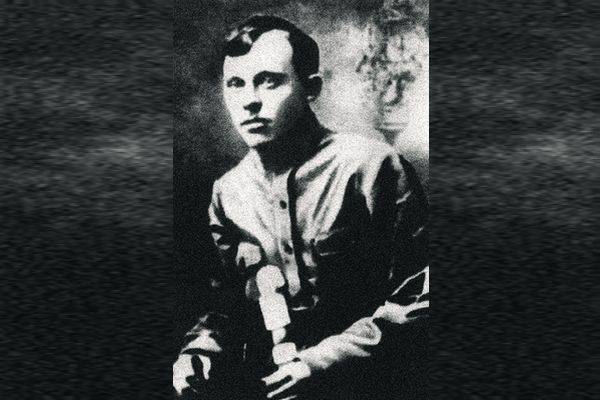
Ten year gangster journey
Let's try to trace history long-term rebel detachment (or rather, the gang) of a certain Kiselev, who operated on the Don and adjacent territories. Former Chonovets PP Belyachenko recalled: "As commander of the CHON squad, I had the opportunity to participate in the fight against the kulak gang of Kiselev, a former White Guard officer. The gang numbered 33 people. They were mostly embittered by Soviet power, the most brutal and experienced counter-revolutionary elements. The gangsters were well-armed and had two horses each. The gang operated in the left-bank part of the Don, on the territory of the 2-th Don District of the Tsaritsyn province (in the area of the villages of Kotelnikovo, Verkhnekurmoyarskaya, Stepanorazinskaya, etc.). dealt with rural communists, especially newcomers, led counter-revolutionary agitation among the Cossack population, plundering citizens returning from Kotel'nikovskii bazaar, doing raids on shops village store and village councils. " A detachment of troops from the NKVD, stationed in Kotelnikovo, fought against the Kiselevs, and the CHON detachments — Kotelnikovsky, Upper Kurmyoyarsky and Stepanorazinsky — fought. After repeated clashes with the Chonovtsev detachments, the gang moved to the Salsk district of the neighboring Don region.
In the rebel 1920-1922's. on the Don, where many leaders, both local and newcomers, have advanced, Kiselev does not appear as a prominent personNXX. At the same time, his detachment, along with the detachment of Andrianov, organized according to military rules, is one of the last to continue the struggle. Only in the summer of 10, these units surrendered (legalized) after negotiations with the Don OGPU. Apparently, in both squads there were at this time only a few dozen people1922. However, already in 11, the Kiselevtsy act again - they killed the chairman of the board of the Kharitonov hamlet (Romanovskaya village), the Communist G.A. Semenkin1923.
The review of the OGPU for June 1924 noted the intensification of banditry in the North Caucasus, especially in the area of railways and resorts. The most active was, as noted, the Kiselev-Kovalev gang in the Don region and Tsaritsyn province13. In July, already in the Volga region, the successful liquidation of banditry was fixed, and as an example the liquidation of the Kiselev-Kulikov gang appears. However, in August, in the Tsaritsyn province, a gang of Kiselev robbed the peasants. Here gangsterism was most active in the entire Volga-Ural region. Obviously, the previous "liquidation" failed.
In the survey for September, three "especially active" gangs in the southeast are distinguished, among them the gang of the same Kiselev. Banditism in Tsaritsyn, Saratov and partially Astrakhan gubernias on the basis of crop failure is noted a few lines below. At the same time, Kiselev's gang stood out in the 2-th Don District with 80 number of people who shot "local workers". "The fight against this gang has taken a protracted nature, part of it has recently been defeated." In the October review, the Kiselev gang once again appears as one of the three active in the south-east. At the end of November, it was announced that Ryabokon’s gang, two more “leaders” and the wound of Kiselev14 were liquidated.
In March, 1925, "the appearance of the recently defeated Kiselev gang in the 8 riders with 12 horses was noted in Tsaritsyn province". This happened against the background of strengthening criminal gangsterism in the Penza, Saratov and Tsaritsyn provinces, as well as the Kirghiz baranty (cattle-breeding). In April, the same “Kiselev gang” from 8 riders was recorded in the 2 Don District.
In general, banditry in the Volga region intensified in areas of crop failure in the territory of the Saratov and Penza provinces. A May survey reported that political banditry in the North Caucasus was "almost eliminated." Namely: the political band Salov, Pronin, Ali-Bulat and partly Kiselev, "who were active in the first quarter of this year, were defeated." At the same time, criminal gangsterism was actively developing, unnerving the workers and peasants. In June, the transition of Kiselev's gang from the Volga region to the North Caucasus was recorded15. Apparently, Kiselev took a time out, for a few months the gang disappears from the reports.
Next year, in the report on the line of the OGPU of the Volga Military District (not earlier than 1 of April 1926), a new gang was noted at Stalingrad from the 8 Kalmyks. She attracted particular attention to the fact that, according to unverified information, “the well-known leader of the gang Kiselev” appeared in her. The OGPU recommended its structures to pour into the gangs informants from among the amnestied gangsters, liaisons, etc. contingent, "as was the case in connection with the expected arrest of Kiselev's gang" 16. However, the arrest did not take place. In August, 1926 recorded an increase in criminal gangsterism in the Samara region and in the Penza province. The "resumed activity" of Kiselev's gang robbed the Nagachskoye credit agricultural partnership. At the same time, in the Volga region, there were 7 gangs with more than 40 people 17. The report of the Special Section for July 1 - 1 of October 1926 noted the active gang of Kiselev, which was transferred from the Stalingrad province to the Salsk district, and the Ozon-Ochaeva gang, which remained in the person of the ringleader. The document specifically stipulated that the surviving leader should be interpreted as an undestructed gang. Kiselev was cited as an example, who remained alone, but after a year he began to act againNewx. In November of the same year, Kiselev's gang seized three citizens of the Khoreyev Farm in the Salsk District. In total, in the Cossack regions of the North Caucasus region, then three gangs were registered in 18 people 16.
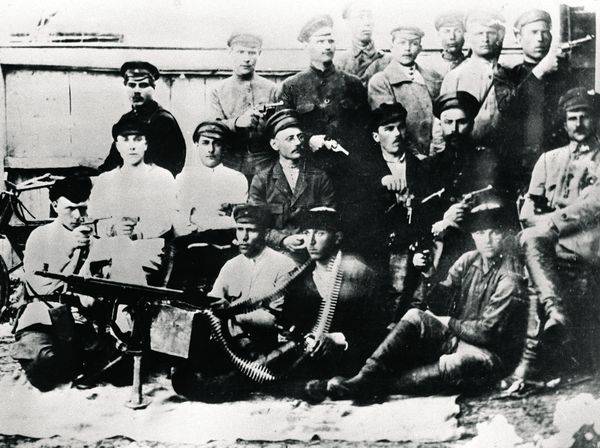
Is the chieftain killed, is the gang alive?
The March review of 1927 reported the death of the gang of Timofey Kiselev and the injury of his assistant Poznyakov during the operation of the leader of the gang who operated with 1920 during the operation.
In June, followed by new successes OGPU. The long-time and active gang of Ozon-Ochaeva got into liquidation, and Zhdakayev, who had led the rebel group for three years, was arrested. The review contains unclear information on the plot that interests us: "The gang of Kiselev after the murder of her leader does not manifest itself during the 9 months" 20. If her manager died in March, then it is unclear which 9 months are being discussed.
In 1928 and 1929 Kiselev's gang, at least with the identification by commander, does not occur21. However, in 1930, the “Kiselev gang”, precisely under this name, manifests itself again, and very actively. On 17 in February, 1930 reported that in the Konstantinovsky district of the Shakhtinsko-Donetsky district, "the kulak element was keen to join the activated Kiselev gang." At this time, open appearances (Vorontsovo-Nikolaevsky district) took place in the Sal district, rebel committees were formed, etc. 22 Opsvodka for 5-10 in March 1930 to eliminate "counter-revolutionary kulak-White Guard and bandit elements" reported: "Last rumors about a wide rebel movement in the North Caucasus region began to spread in a number of districts of the Stalingrad district. In the Kotelnikovsky and Nizhne-Chirsky districts there was a rumor about activities in the Salsky district of the North Caucasus Kiseleva gang, allegedly numbering several hundred people "23.
According to a report on anti-banditry on 27 in July, she 16 robbed a land surveyor in the area of Krendelev's farm, 18 in the state farm N 16 (35 km north-west of Renovation), hacked the cell secretary, pre-laborer and two workers and seized two horses. 20-th on the farm N 5 (40 km south-west of the shelter) gang seized the car. Pursued by the task force, she threw property, horses and documents of those killed in the state farm N 16, destroyed the car and hid in Kalmykia. However, the 23 th operation group found a gang on Lobova Farm, in the area of Kiselevka on the border with the Kalmyk region. A three-hour skirmish followed, during which two mobsters were wounded, two rifles and three horses were captured. On the red side, the district commissioner was seriously injured (OGPU, I suppose). The gang disappeared with the onset of darkness, the task force continued the pursuit of 24. On this episode, the traces of the Kiselevs are lost.
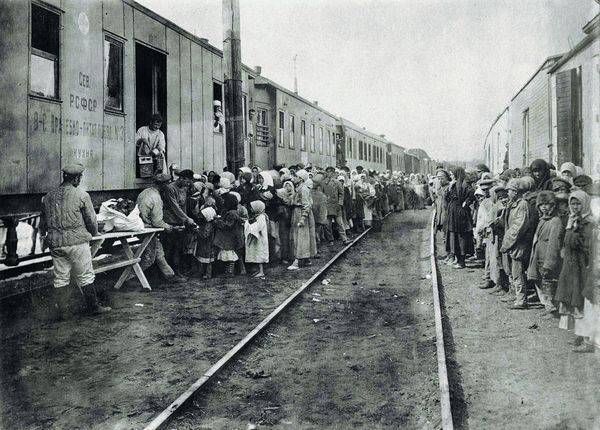
Who is Kiselev?
The leader of the detachment itself is difficult to identify due to the prevalence of the name and the paucity of information. In 1927, the summary gives the name of the killed leader - Timofey. Often Kiselev is called an officer. If you are guided by the name and Cossack origin, the following candidate appears: Timofey Kiselev, junior consignor who served on 1918 in September in 9 Don Cossack Ust-Belokalitvensky foot regiment and on 1920, perhaps received an officer’s rank 25.
There are other Kiselevs. So, in the above-mentioned Ogoltsov, the leader of Ryazan greens, a certain Kiselev, a former teacher and officer, was with his right hand. Obviously, he was engaged in ideological and political work 26. This man is no more than the namesake of our hero, their fates did not overlap. More interesting is the situation with another Kiselev, an ally of the famous Volga ataman, the rebel Serov. It is likely that he joined the Serov rebel unit, commanding an initially independent detachment. So, at the end of July 1919, in the Samara district, there was a “predatory gang” of Kiselev27. He became the successor of Serov in the spring of 1922. 28 Among the Serovs were both former Chapayevites and Ural Cossacks. You can see in Kiselev and resident Kiselevka, near which his detachment manifested itself. This "white" village in 1918 actively fought against the reds 29.
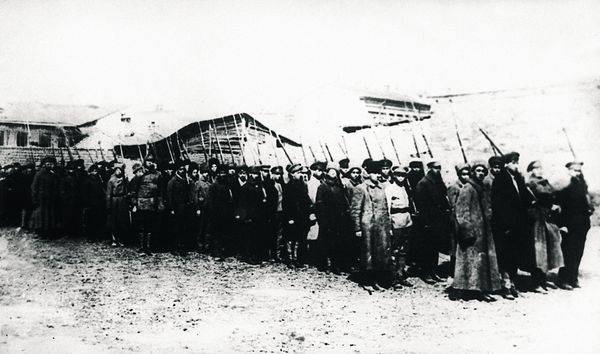
How much rope does not curl ...
So, for almost ten years, a rebel group has operated in a vast territory that has not lost its political tint. Her constant commander was Kiselev. The gang was repeatedly declared defeated or destroyed, but it was reborn. Obviously, Kiselev was left alone at times and stopped insurgent activity, but was able to resume it. At the same time, the personnel, as can be seen, varied greatly both in number and in composition - from a few to a few dozen people, from “experienced White Guards” to simple Kalmyks. The death of the leader, recorded by the red side, did not become the end of the squad. He apparently continued to act, still labeled as "Kiselev's gang." We can assume and false information about death, and the fact that the "Kiselev gang" has become a rebel brand. The ambiguous policy of the Soviet government towards the peasants allowed the insurgent struggle to flare up with new force at times, and for such detachments as Kiseleva to receive a serious and extensive support infrastructure, a large number of people indirectly involved in the struggle as informers, harbingers, suppliers. If "our" Kiselev is identical to the Volga associate of Serov, then the scale of his actions is even more extensive.
Notes
1. Pylkin V.A. "The Ogoltsovsky Front" of the Ryazan Communists: Insurgent Movement in the Ryazhsky District of the Ryazan Province at the end of the Civil War // The Peasant Front 1918 - 1922. Sat articles and materials. Comp. and scientific ed. A.V. Posadsky. M., 2013. C. 295-306; Goltseva G.K. Ogoltsovschina. Imperatives of "ataman" Nikushin // From "German" to Civil: the formation of the corps of national leaders of the Russian distemper. Sat articles and materials. Comp. and scientific ed. A.V. Posadsky. M., 2014. C. 284 - 307.
2. Danilov A.Yu. Konstantin Ozerov: myth and reality // Yaroslavl many-sided. 2003. N 4. C. 16-19.
3. Novikov P.A. Odyssey of Colonel Valentin Duganov // White Guard. Almanac. 2002. N 6. C. 91-92; Tkachev E. Luck of Colonel Komarov // Stanitsa. 2002. N 1 (37). C. 26-27.
4. Sheksheev A.P. Civil unrest on the Yenisey: winners and losers. Abakan, 2006. C. 197-213.
5. Information from the help of the deputy. beginning VOLENBERG's Eastern Division from 17 February 1925 (RGASPI. 76. Op. 3. D. 353. L. 45, 49-50; Soviet Village through the eyes of the Cheka - OGPU - NKVD. 1918 - 1939. Doc. And Mat In 4 T. T. 2. 1923 - 1929 M., 2000. C. 338-344, 398-401, 452-454.
6. Goichenko D. Through dekulakization and famine: eyewitness testimony. M., 2006. C. 243-246.
7. "Top Secret": Lubyanka - to Stalin about the situation in the country (1922 - 1934). T. 5. 1927, M., 2003. C. 158.
8. Russian Truth. 1927. January February. C. 15; 1931. March-April (GARF. F. P-5853. Op. 1. D. 45. L. 303).
9. Russian history. Twentieth century. 1894 - 1939. M., 2009. C. 890. An essay on the oral history materials, see: V.A. Voloshin, N.A. Kucherov. Esaul Kozlov. Access mode: http://roia.otradnaya.com/files/VoloshinVA_KucherovNA_Esaul_Kozlov.pdf.
10. Grishchenko A.N. Anti-Bolshevik rebel movement in the Don region in 1920 - 1922. Diss ... Ph.D. Rostov-on-Don, 2009.
11. Ibid. C.194-195.
12. G.A. Semenkin was declared a local hero - the farm was renamed Semenkino, the collective farm created later also began to bear his name.
13. "Top Secret": Lubyanka - to Stalin ... T. 2. 1924, M., 2001. C. 136. Kiselev is represented as "the head of a gang (up to 80 people, from Cossacks Donskoy (what? —A.P.) and Salsk districts), committed in 1924 - 1926. Killing of party and Soviet workers, looting and raids in Salsk and 2m of the Don districts Tsaritsyn province, Kalmyk autonomous region "(ibid. C. 454).
14. Ibid. C. 160, 186, 212, 213, 245, 277.
15. "Top Secret": Lubyanka - to Stalin ... T. 3. 1925 G. CH. 1. M., 2002. C. 193, 248, 309, 374.
16. Soviet village ... T. 2. 1923 - 1929 C. 399, 401.
17. "Top Secret": Lubyanka - to Stalin ... T. 4. 1926 G. CH. 1. M., 2001. C. 552.
18. Soviet village ... T. 2. 1923 - 1929 ... S. 453, 454.
19. "Top Secret": Lubyanka - to Stalin ... T. 4. 1926 G. CH. 2. M., 2001. C. 831.
20. "Top Secret": Lubyanka - to Stalin ... T. 5. 1927, M., 2003. C. 263, 441.
21. "Top Secret": Lubyanka - to Stalin ... T. 6. 1928, M., 2002; T. 7. 1929, M., 2004.
22. Soviet village ... T. 3. 1930 - 1934 Prince 1. 1930 - 1931 M., 2003. C. 182.
23. Ibid. S. 246.
24. "Top Secret": Lubyanka - to Stalin ... T. 8. 1930 G. CH. 2. M., 2008. C. 1397.
25. Letters of S.V. Volkova - author of 6 and 24 of June 2010. // Author’s archive. I express my appreciation to S.V. Volkov for the information provided.
26. Pylkin V.A. Peasantry Center of Russia in the Civil War. Socio-political attitudes, social processes, protest. Ryazan, 2005. C. 248.
27. Soviet village ... T. 1. 1918 - 1922 M., 1998. C. 160.
28. Ibid. C. 487, 557, 564, 590; "Top Secret": Lubyanka - to Stalin ... T. 1. 1922 - 1923 CH 1. M., 2001. C. 123.
29. Antropov O.O. Astrakhan Cossacks. At the turn of epochs. M., 2008. C. 150, 178; Grazhdanov Yu.D. The Great Don Army in 1918. Volgograd, 1997. C. 39.
Information